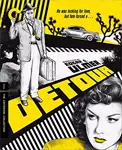DETOUR
Detour is a classic film noir from 1945 directed by Edgar G. Ulmer. The film is known for its low budget and atmospheric, gritty style that has influenced the genre to this day.
The story follows Al Roberts, a struggling musician who hitchhikes from New York to Hollywood to be with his girlfriend. Along the way, he meets the manipulative Vera and becomes entangled in a web of deceit and crime. The film’s plot twists and turns as Al is forced to confront his darkest impulses and make difficult decisions that will determine his fate. “Detour” is an essential film noir that showcases the genre’s key themes of desperation, greed, and moral ambiguity. It is renowned for its innovative use of narrative structure and visual style, as well as its powerful performances by its lead actors Tom Neal and Ann Savage.
PLOT
“Detour” is a classic film noir from 1945 directed by Edgar G. Ulmer. The story follows Al Roberts, a struggling musician who hitchhikes his way from New York to Hollywood to be with his girlfriend, Sue. Along the way, he meets the manipulative and dangerous Vera, who hitches a ride with him after her own driver becomes ill.
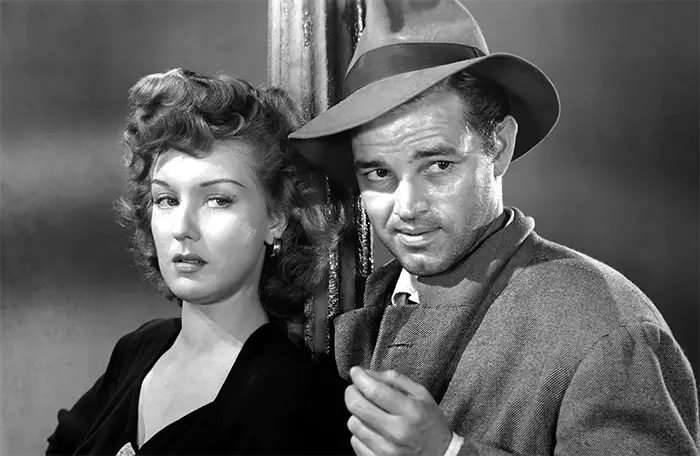
As Al and Vera continue their journey, she begins to seduce him, and he becomes increasingly drawn into her web of lies and deceit. One night, while they are driving through the desert, Vera offers to switch places with Al so that he can get some rest. However, when he wakes up, he finds that Vera has taken his money and left him stranded in the middle of nowhere.
Desperate and alone, Al hitches another ride with a kindly man who is traveling to Los Angeles. However, when they stop at a roadside diner, Al is shocked to see Vera walk in. She tells him that she killed her previous driver, and that she intends to blackmail Al into helping her flee the country. Al reluctantly agrees, and the two of them set off on a dangerous journey to Mexico.
As they travel through the desert, Al becomes increasingly paranoid and begins to suspect that Vera is planning to kill him. However, when they finally arrive in Mexico, they are stopped at the border, and Al is forced to confront the consequences of his actions.
The film’s plot is driven by its central themes of desperation, greed, and moral ambiguity. Al is a deeply flawed character, consumed by a desire to make it in the music industry. He is willing to do whatever it takes, including hitchhiking across the country and lying to his girlfriend, to achieve his dreams. However, his journey takes a dark turn when he meets Vera, who manipulates him into committing a crime.
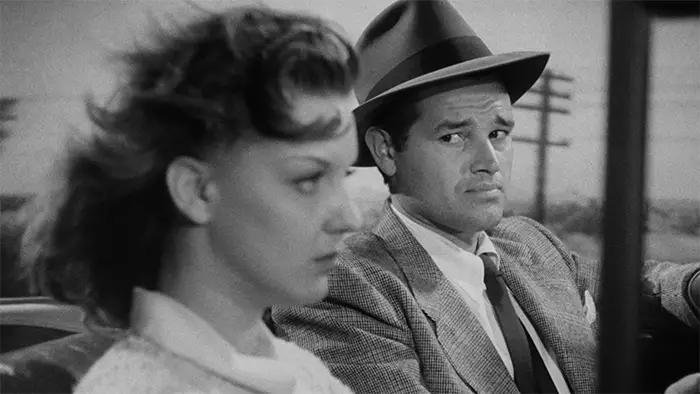
One of the most striking elements of “Detour” is its non-linear storytelling. The story is told through a series of flashbacks, as Al recounts his journey to a stranger in a roadside diner. This structure adds to the sense of uncertainty and unreliability in the film, as the audience is left to question Al’s version of events and whether or not he is a reliable narrator.
The film’s ending is one of the most infamous in film history. Without giving away too many spoilers, the ending is both shocking and ambiguous, leaving the audience to draw their own conclusions about Al’s fate and the nature of morality in the film’s world.
DETOUR: AN EXTRAORDINARY TALE
The film was based on a novel called “Detour: An Extraordinary Tale” by Martin M. Goldsmith, which was published in 1939. The novel is a pulp fiction crime thriller that follows the story of Al Roberts, a pianist who hitchhikes from New York to California and finds himself embroiled in a web of deceit and murder.
The novel shares some similarities with the film adaptation, including its bleak and darkly humorous tone, as well as its exploration of moral ambiguity and the darker aspects of human nature. However, the film is widely regarded as a more innovative and influential work, due in part to its unique and experimental visual style, as well as its groundbreaking use of non-linear storytelling.
Although the novel has never achieved the same level of fame and acclaim as the film adaptation, it has gained a cult following among fans of pulp fiction and crime thrillers. It has been reissued multiple times over the years and is still available for purchase today. The novel has also been adapted for radio, with a version of the story airing on the radio show “Suspense” in 1942.
THEMES
“Detour” explores the darker aspects of human nature. The film’s themes revolve around desperation, greed, and moral ambiguity, and these themes are central to the story of Al Roberts, a struggling musician who hitchhikes his way from New York to Hollywood.
One of the most prominent themes in “Detour” is desperation. Al is a man who is willing to do whatever it takes to achieve his dreams, including hitchhiking across the country and lying to his girlfriend. His desperation is fueled by his desire to make it in the music industry, but his journey takes a dark turn when he meets Vera, who manipulates him into committing a crime.
This leads to the second major theme in the film, which is greed. Vera is a character who is consumed by her own greed, and she uses Al’s desperation to her advantage. She sees him as a means to an end, and she uses him to help her escape the law. Vera’s greed is ultimately her downfall, and she pays the ultimate price for her actions.
The film also explores the theme of moral ambiguity. Al is a deeply flawed character who is driven by his own desires, and he is willing to do whatever it takes to achieve his goals. He lies, cheats, and steals, but he is not entirely without sympathy. As the story progresses, he becomes increasingly paranoid and begins to suspect that Vera is planning to kill him. He wrestles with his conscience, and ultimately, he is forced to confront the consequences of his actions.
Another important theme in the film is the idea of chance and fate. Al’s journey is driven by a series of chance encounters, and his life is forever altered by the decisions he makes. The film suggests that fate is not always kind, and that even the smallest decision can have a profound impact on a person’s life.
The film’s narrative structure also contributes to its themes. The story is told through a series of flashbacks, as Al recounts his journey to a stranger in a roadside diner. This structure adds to the sense of uncertainty and unreliability in the film, as the audience is left to question Al’s version of events and whether or not he is a reliable narrator.
Finally, “Detour” explores the theme of justice and morality. Al’s journey is one of moral reckoning, and he is ultimately forced to confront the consequences of his actions. The film suggests that there is a moral order to the universe, and that those who flout that order will ultimately be punished.
RECEPTION
 Upon its release in 1945, “Detour” received mixed reviews from critics and audiences. While some critics praised the film’s raw, gritty style and innovative storytelling, others found it to be too bleak and nihilistic. However, over time, the film has gained a reputation as a classic of the film noir genre and is widely regarded as one of the greatest examples of independent filmmaking.
Upon its release in 1945, “Detour” received mixed reviews from critics and audiences. While some critics praised the film’s raw, gritty style and innovative storytelling, others found it to be too bleak and nihilistic. However, over time, the film has gained a reputation as a classic of the film noir genre and is widely regarded as one of the greatest examples of independent filmmaking.
Despite its limited budget and shooting schedule, director Edgar G. Ulmer was able to create a unique and memorable film that continues to captivate audiences to this day. The film’s unconventional narrative structure, which uses flashbacks and an unreliable narrator to tell its story, was ahead of its time and has influenced many subsequent works in the film noir genre.
“Detour” also features a memorable and haunting performance from Tom Neal as Al Roberts, the film’s flawed and morally ambiguous protagonist. The film’s bleak tone and sense of moral ambiguity have also been praised, with many critics noting its unflinching portrayal of the darker aspects of human nature.
Over time, the film has gained a reputation as a cult classic and an important example of film noir. Its influence can be seen in many subsequent works, including Martin Scorsese’s “Taxi Driver” and the Coen Brothers’ “Blood Simple.” The film’s impact on popular culture has also been significant, with references and homages to “Detour” appearing in music, television, and film.
In 1992, “Detour” was selected for preservation in the United States National Film Registry by the Library of Congress, which deemed it “culturally, historically, or aesthetically significant.” This recognition further cemented the film’s place in cinematic history and helped to introduce a new generation of audiences to its unique and groundbreaking style.
Despite its initial mixed reception, “Detour” has since become an important and highly influential film, not just within the film noir genre but in the wider landscape of cinema. Its impact can be seen in the many adaptations and remakes that have followed, as well as in the lasting impact it has had on popular culture.
POPULAR CULTURE
Despite its relatively low budget and limited release, “Detour” has had a lasting impact on pop culture and continues to be celebrated as a classic of the film noir genre.
One of the most enduring legacies of “Detour” is its influence on future filmmakers and writers. The film’s themes of desperation, greed, and moral ambiguity continue to inspire new generations of artists who are drawn to the dark underbelly of the human experience. Its innovative narrative structure, which employs flashbacks and an unreliable narrator, has also been emulated by numerous films and television shows in the years since its release.
Additionally, “Detour” has been celebrated for its strong visual style and effective use of shadow and light. The film’s use of high contrast lighting and its bleak, urban landscapes have become synonymous with the film noir genre, and have influenced countless filmmakers in the decades since its release.
The film has also been the subject of numerous tributes and references in popular culture. For example, the 1990 Coen Brothers film “Miller’s Crossing” features a character who is a fan of “Detour” and references the film’s famous tagline, “Fate, or some mysterious force, can put the finger on you or me for no good reason at all.” Additionally, the 1995 crime film “The Usual Suspects” features a shot that is directly inspired by a similar shot in “Detour” in which the camera tilts up to reveal a character’s face.
The film’s enduring popularity has also led to numerous adaptations and remakes. In 1992, “Detour” was remade as a made-for-TV movie, and in 2016, a feature film remake was announced, though it has yet to be released. The film has also been adapted into a stage play, which premiered in London in 2018.
The film has also been referenced in popular music, with artists such as Tom Waits and Elvis Costello citing it as an influence on their work. Waits even recorded a cover of the film’s theme song, “Detour Ahead,” for his album “Closing Time.”
Furthermore, “Detour” has been celebrated in the world of literature. The novel “Detour: A Hollywood Story” by Cheryl Crane and Cliff Jahr was inspired by the film and explores the dark underbelly of the Hollywood film industry. The book has been praised for its gripping storytelling and its ability to capture the essence of the film noir genre.
Overall, “Detour” has left an indelible mark on popular culture, and its influence can be felt in a wide range of media. Its enduring legacy is a testament to the power of great storytelling and the enduring relevance of the film noir genre.
Explore more Film Noir
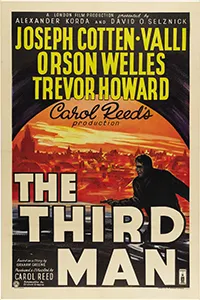
Classic film noir set in post-WWII Vienna, where a writer investigates the mysterious death of his friend.
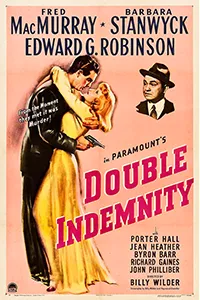
A gripping film noir about a seductive woman who convinces an insurance salesman to plot a murder.
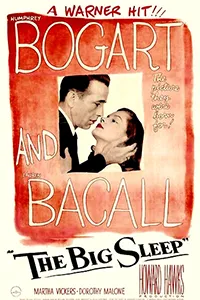
This classic film noir follows private detective Philip Marlowe as he investigates a complex case involving a wealthy family.
